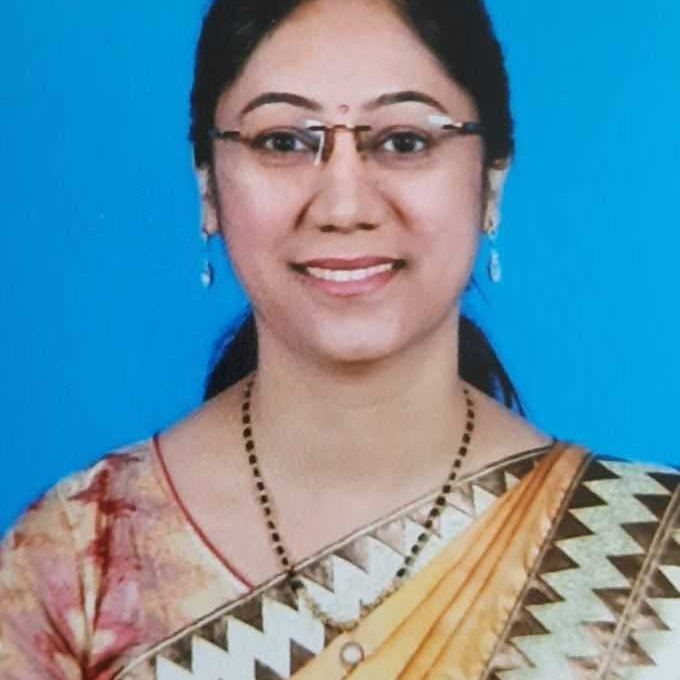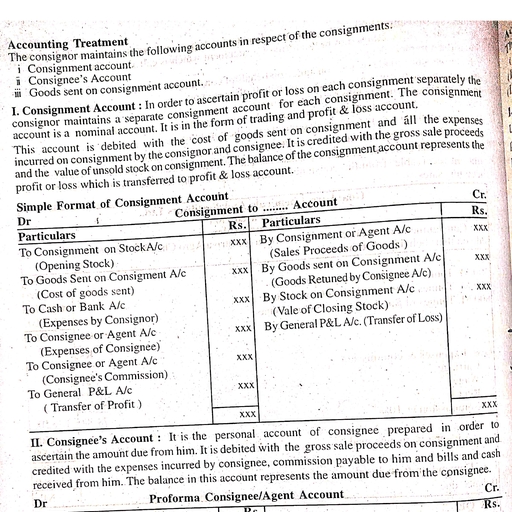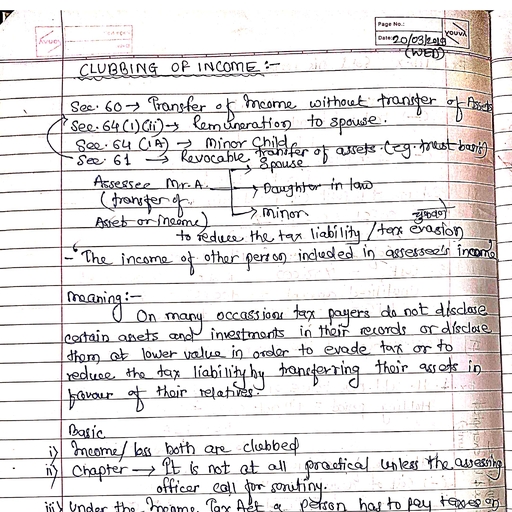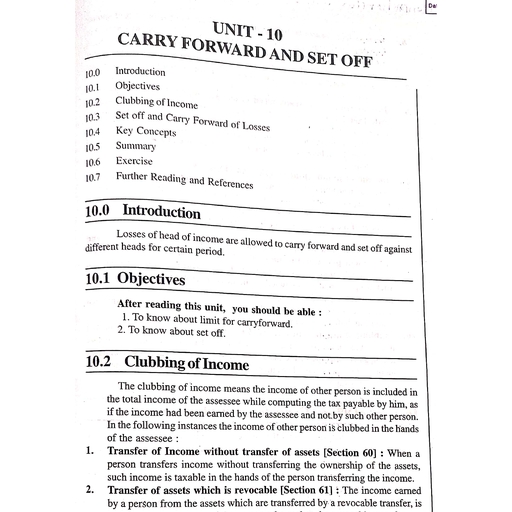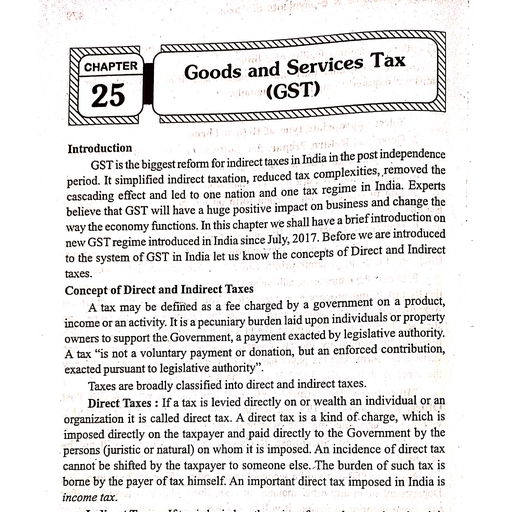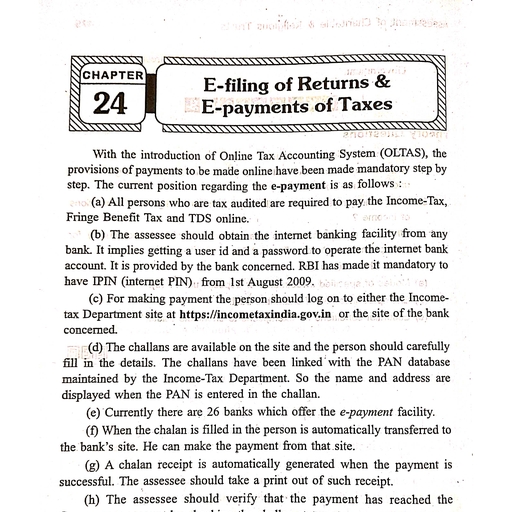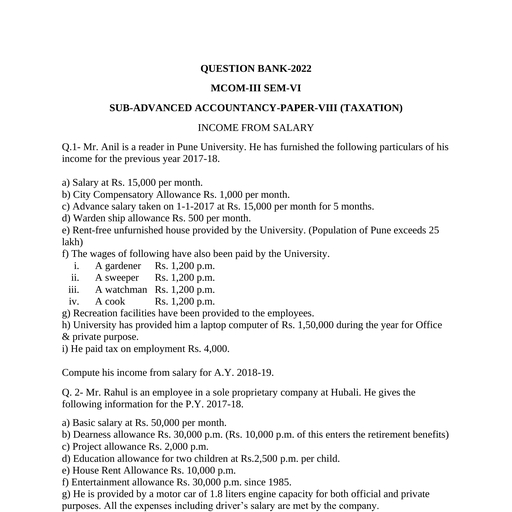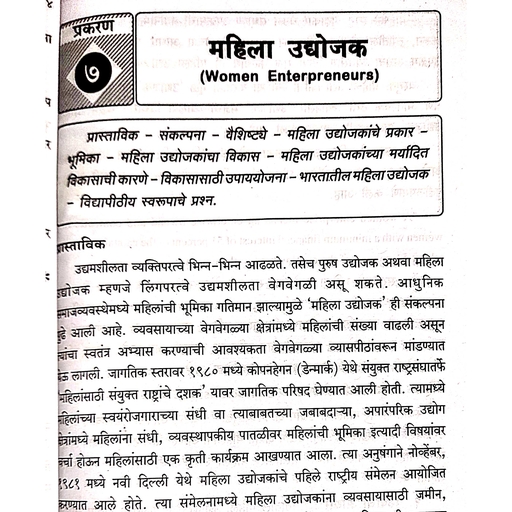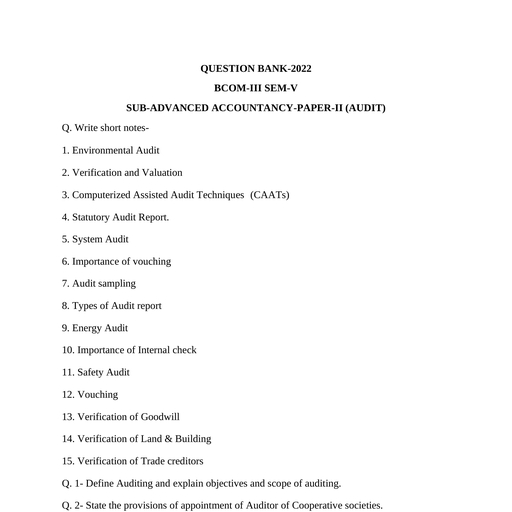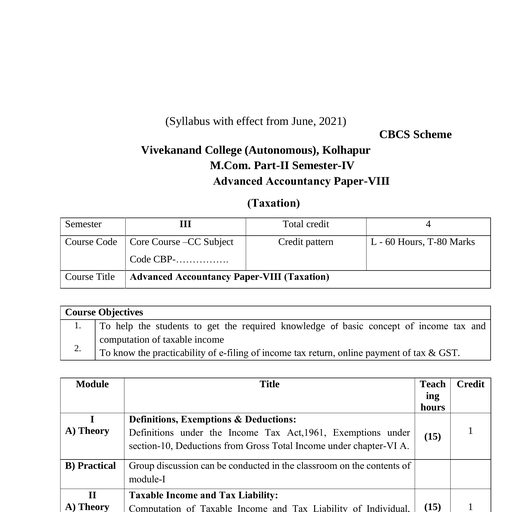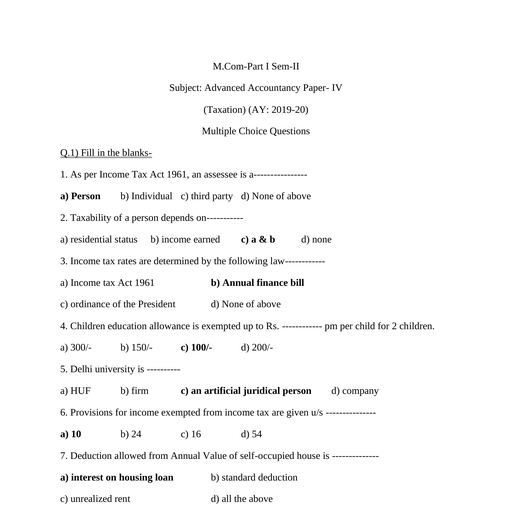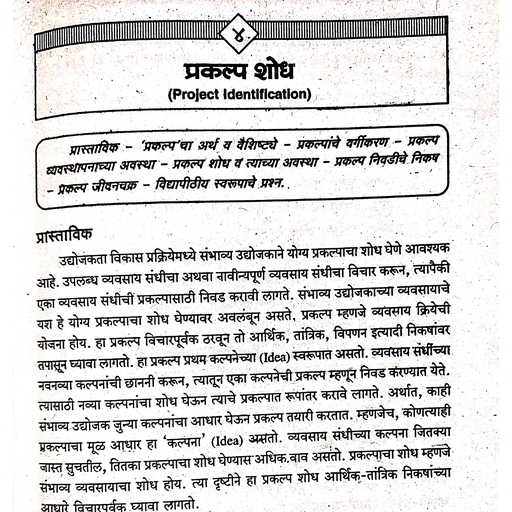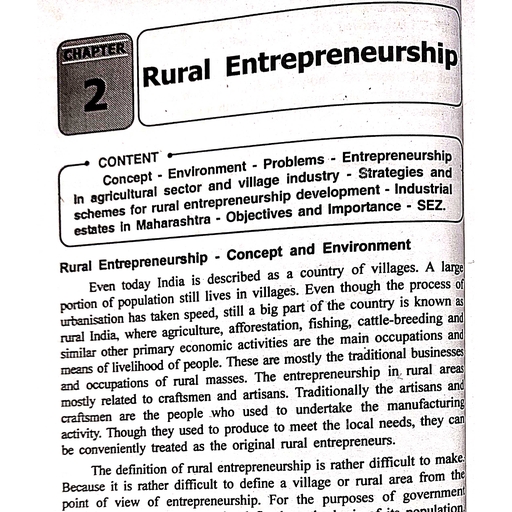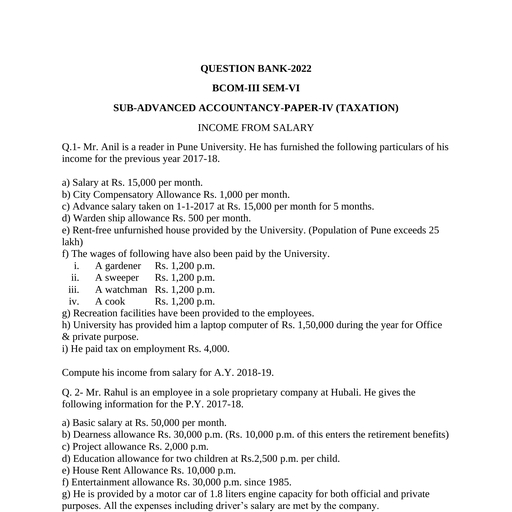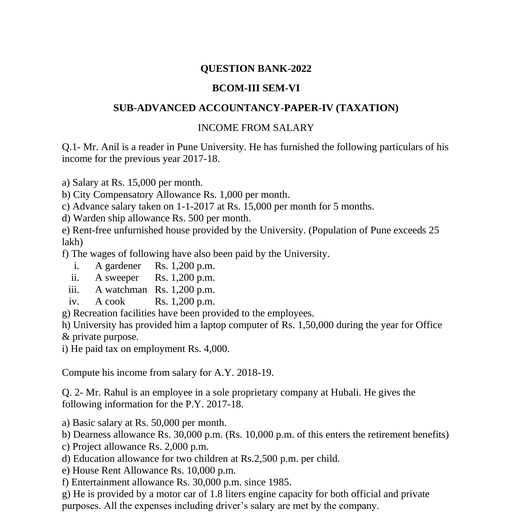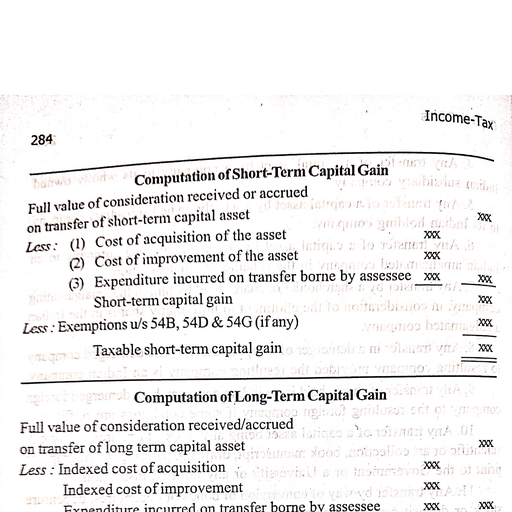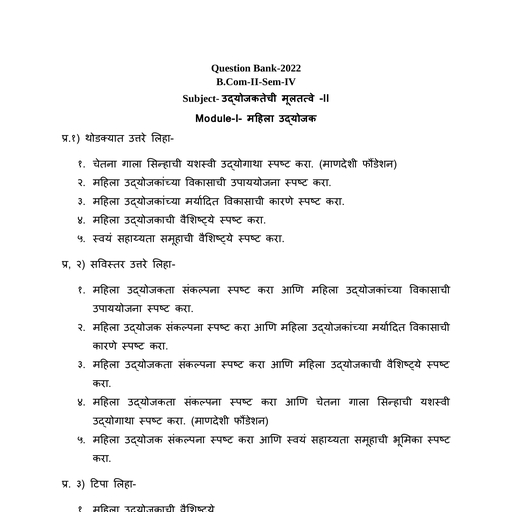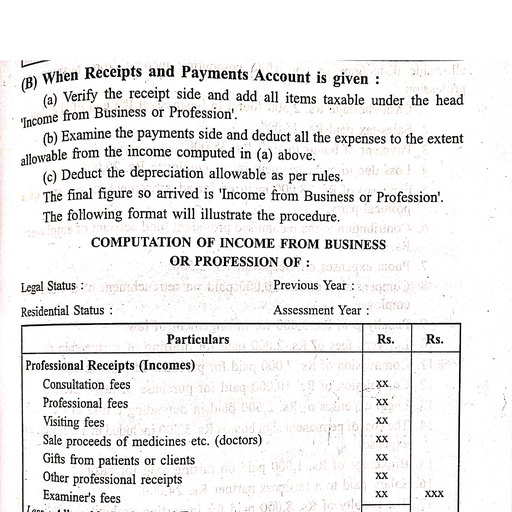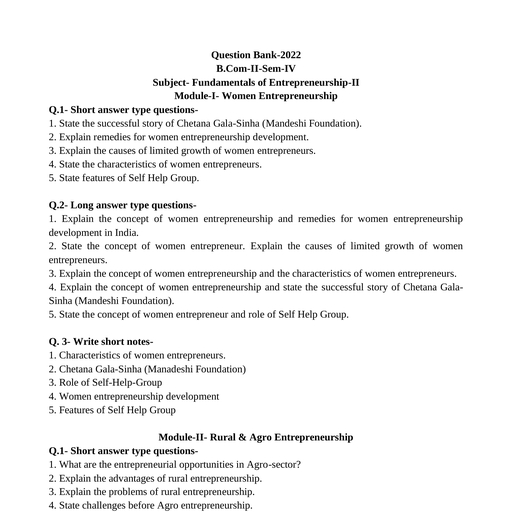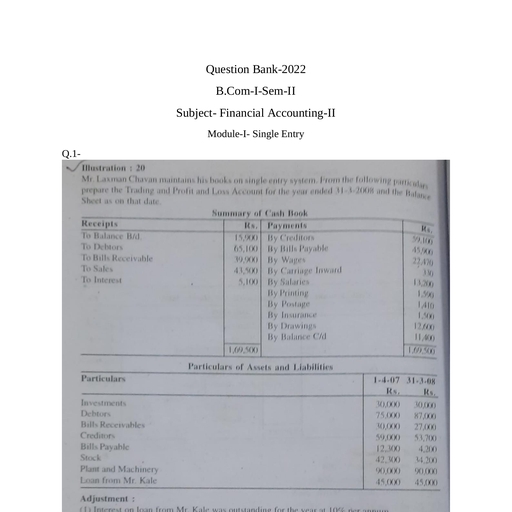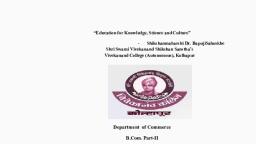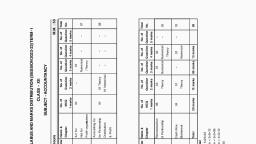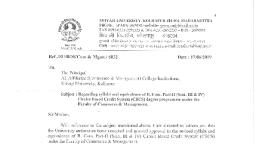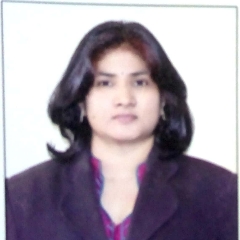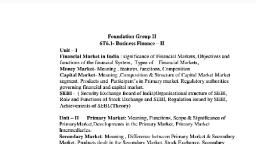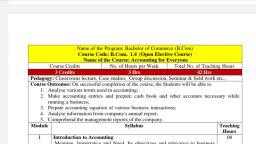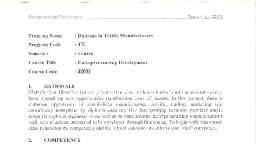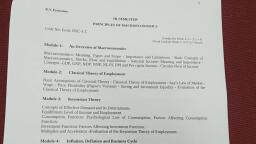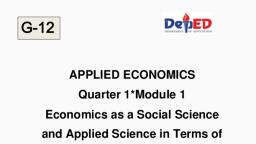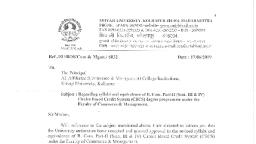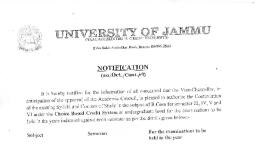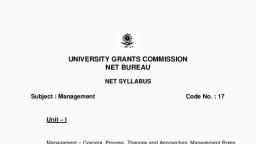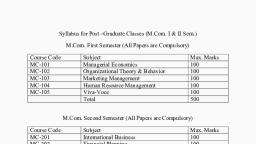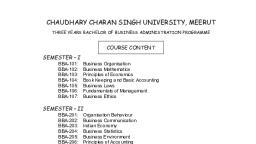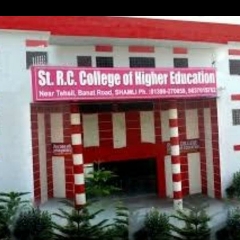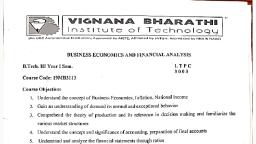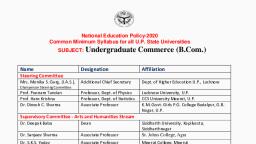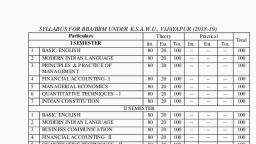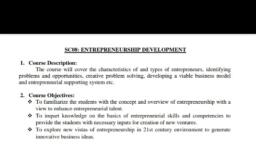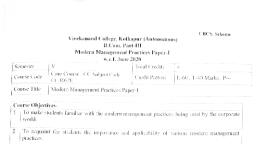Page 1 :
“Education for Knowledge, Science and Culture”, Shikshanmaharshi Dr. BapujiSalunkhe, Shri Swami Vivekanand Shikshan Sanstha’s, Vivekanand College (Autonomous), Kolhapur, , Department of Commerce, B.Com. Part-II, Semester III & IV, CBCS, Semester, , III, , IV, , Paper, No., III, I, I, , Course Code, AECC-1040 C, CC-1047 C, CC-1048 C, , Course Title, English for Business Communication, Fundamentals of Entrepreneurship, Corporate Accounting, , No. of, Credits, 04, 04, 04, , III, , CC-1049 C, , Business Economics, , 04, , I, , CC-1050 C, , Capital Market, , 04, , I, , CC-1051 C, , Business Statistics, , 04, , English for Business Communication, , 04, , IV, , AECC-1040 D, , II, II, IV, , CC-1047 D, CC-1048 D, CC-1049 D, , Fundamentals of Entrepreneurship, Corporate Accounting, Business Economics, , 04, 04, 04, , II, , CC-1050 D, , Capital Market, , 04, , II, , CC-1051 D, , Business Statistics, , 04, , ENV, , Environmental Studies, Syllabus with effect from June, 2019, , 04
Page 2 :
CBCS. Scheme, , Marks: 50, , Vivekanand College(Autonomous), Kolhapur, B.Com. Part-II Semester-III, Core Code: CC-1047 C, Fundamentals of Entrepreneurship Paper –I, Teaching Hours: 60, , Credit:4, , Syllabus, , OBJECTIVES: The objective of this course is to familiarize students with the concept of entrepreneur and, entrepreneurship, to enlighten students with Recent Trends and service industry and to develop entrepreneurship, qualities and skills., COURSE OUTCOMES: After successful completion of this course, CO1: The student will acquire knowledge of entrepreneurship., CO2: The student will understand usefulness of financial assistance and support provided by different institutes., CO3: The student will understand usefulness of e-commerce for different financial transactions., CO4: The students will understand Stories of Successful Entrepreneurs., Module, Title, , Teaching, , Credit, , Hours, Module I, , Entrepreneur: Concept - Classification -Functions- Qualities of Successful, , (15), , 1, , (15), , 1, , (15), , 1, , Entrepreneur - Concept of Intrapreneur and Netpreneur– Obstacles to, become an entrepreneur- Challenges before entrepreneurs in modern Era., , Module II, , Entrepreneurship: Concept - importance - Theories of Entrepreneurship Joseph Schumpeter's Innovation Theory, McClelland's Theory of need, achievement, Hagen's Theory of status withdrawal, Knight’s risk-taking, theory - Entrepreneurship in service Industry- Role of service sector in, national economy- opportunities in service sector., , Module III, , Entrepreneurship Development: Concept - Objectives – process- problems, and measures of EDP in India - Institutional support for Entrepreneurship, development - EDI, NIESBUD, MCED,DIC – Recent trends – Start up,, Stand up, Skill India, Make in India- Incubation Centre- concept and, importance.
Page 3 :
Module IV, , Stories of Successful Entrepreneurs:, , (15), , 1, , Male:JRD Tata, Dhirubai Ambani (Reliance), Hanmantrao Gaikwad (BVG),, Sachin Bansal &Binny Bansal (Flipkart)., Female: Aditi Gupta (Whisper Girl), Veena Patil (Veena World), Vandana, Luthra (VLCC) -their entrepreneurial sketch and qualities., , REFERENCE BOOKS:, 1. Dynamics of Entrepreneurial Development & Management - By Vasant Desai., 2. Udyojakata - By Prabhakat Deshmukh, 3. Entrepreneurship Development in India - By C.B. Gupta & N.P. Shrinivasan, 4. Project preparation Appraisal, implementation - By Prasanna Chandra, 5. Entrepreneurship and small Business management - By Shukla M. B., 6. Entrepreneurial Development - By Khanaka S. S., 7. Entrepreneurial Development - By Godron E. & Natarajan K., 8. Entrepreneurial Development - By Taneja satish& Gupta S. L., 9. Current Trends in Entrepreneurship - By Mohan S. Elangovan R., 10. Entrepreneurship - Robert D. Hisrich Michael, P. Peter, 11. Entrepreneurial Deveiopment - Vasant Desai (3 volumes), 12. Development Banks and Entrepreneurship Promotion in India - P. K. Sharma., 13. Entrepreneurship Small Scale Industries - G. S. Batra and R. C. Dangal., 14. Entrepreneurship Development – By S. Anil Kumar, S. C. Poornima, , NATURE OF QUESTION PAPER:, Written Examination, Total Marks = 40 Time=2.00 hours, Question, Question No1, Question No 2, , Question No 3, , Question No 4, , * All Questions are compulsory (Based on all Modules), Nature of Question, Short Answers (Any 2 out of 3 ), A) Essay type Question, OR, B) Essay type Question, , Grand Total, , Total, , 10, , A) Essay type Question, OR, B) Essay type Question, Short Notes ( Any 2 out of 3), Internal Evaluation, , Marks, 10, 10, , 40, , Home Assignment, Oral, , 10, 05, 05, , 10, 50
Page 4 :
CBCS. Scheme, , Marks: 50, , Vivekanand College(Autonomous), Kolhapur, B.Com. Part-II Semester-III, Core Code: CC-1048 C, Corporate Accounting Paper –I, Teaching Hours: 60, , Credit:4, , Syllabus, OBJECTIVES: The objective of this course is to develop awareness among students regarding Corporate, Accounting in conformity with the provisions of Indian Companies Act 1956 & amendment act 2013 with, Indian Accounting Standards as well as train them in practical accounting., COURSE OUTCOMES:, CO1: To understand issue of shares and debenture and there redemption, to know the Company Final Account, (As per Schedule III to the Indian Companies Act 2013)., CO2: To know the concept of profit prior to after incorporation and new concepts in accounting., Module, , Title, , Teaching, , Credit, , Hours, Module I, , A) Issue and forfeiture of shares, Re-issue of forfeited shares: Meaning of, , (15), , 1, , (15), , 1, , (15), , 1, , Company, Types of Companies, Share- Meaning, Types of shares, Share, Capital , Types of share Capital (Problems on issue of shares at par, Premium, and Discount, Calls in arrears, calls in advance, prorata allotment, forfeiture, of shares and reissue of forfeited shares., B) Issue and Redemption of Debentures (Sinking Fund Method only), Debenture-Meaning, difference between shares and debenture, types of, debenture, issue of debenture and redemption of debenture ( sinking fund, method only), , Module II, , Company Final Account (As per Schedule III to the Indian Companies, Act 2013) Final Accounts of Companies in Vertical form only.( with the, help of notes to accounts, advanced proforma of Final Accounts), , Module III Profit /Loss Prior to Incorporation:, Introduction, meaning, calculation of various ratios- sales ratio, time ratio,, special ratio and practical problems.
Page 5 :
Module IV Human Resource Accounting, Social Responsibility Accounting, Green, , 1, , (15), , Accounting, Forensic Accounting ( Theory Only), , REFERENCE BOOKS:, 1. Chougule Rajan - Computerized Accounting, 2. Gupta R. L. Radhaswamy M. - Company Account. Sultan Chand and Sons; New Delhi., 3. H. Chakraborty- Advanced Accountancy, 4. Jain and Narang- Advanced Accountancy, 5. Maheshwari S. N. - Corporate Accounting. Vikas Publication House, New Delhi., 6. Shukla M. C. - Grewal T.S. and Gupta S.C. - Advanced Accounts; S.Chand and Co. New Delhi., 7. S.P. Iyangar - Advanced Accountancy., , NATURE OF QUESTION PAPER:, Written Examination, Total Marks = 40 Time=2.00 hours, Question, Question No1, , Question No 2, , Question No 3, , * All Questions are compulsory (Based on all Modules), Nature of Question, A) Problem 08 Marks, B) Problem 08 Marks, Note: Common data/Problem be given for (A) & (B)above., Attempt any Two out of Three, A) Separate Problem 08Marks, B) Separate Problem 08Marks, C) Separate Problem08 Marks, Short Notes [Any Two out of Four], Home Assignment, Internal Evaluation, Oral, Grand Total, , Marks, 16, , Total, , 16, , 40, 08, 05, 05, , 10, 50
Page 6 :
CBCS. Scheme, , Marks: 50, , Vivekanand College(Autonomous), Kolhapur, B.Com. Part-II Semester-III, Core Code: CC-1049 C, Business Economics Paper –III, Teaching Hours: 60, , Credit: 4, , Syllabus, OBJECTIVES: The objective of the course is to helps student learn and understand macro economic, national, income, theory of Value of Money and theory of Output and Employment concepts with their principles and to, apply them in to a verity of business situations., COURSE OUTCOMES:, CO1: Understand basic concepts and theories in macro-economic, CO2: Describe the interrelationships among prices, income, money output and employment as they affect, Consumption, saving and investment., CO3: Analyze causes and consequences of unemployment, inflation and economic growth., Module, Module I, , Module II, , Module III, , Module IV, , Title, , Teaching, Hours, , Credit, , Introduction to Macro Economics:, 1.1 Meaning, Nature and Scope, 1.2 Significance, 1.3 Limitations, 1.4 Objectives of macroeconomics, National Income:, 2.1 Meaning and Concepts : GDP,NDP, GNP, NNP, PCI, PI,DI and Private, Income, 2.2 Methods of measurement: Product, Income and Expenditure, 2.3 Difficulties in Measurement, 2.4 Application of National Income Data, Theory of Value of Money:, 3.1 Concept of Value of Money,, 3.2 Quantity Theory of Money and Cambridge approach, 3.3 Inflation and Deflation : Causes, Effects and remedies, 3.4 Practical : Market survey/ Trends in Prices, Theory of Output and Employment:, 4.1 Say’s Law of Markets, 4.2 Keynesian Theory of Employment, 4.3 Consumption and Investment Function, , (15), , 1, , (15), , 1, , (15), , 1, , (15), , 1
Page 7 :
4.4 Practical : Trends in employment / Survey of Consumption/ Investment, pattern, , REFERENCE BOOKS:, 1., 2., 3., 4., 5., 6., 7., 8., 9., 10., 11., 12., 13., 14., 15., 16., 17., 18., 19., 20., , Keynes J. M.: The General Theory., Ahuja H. L.: Advanced Economic Theories, Shapiro Edward: Macro Economic Analysis., Allen R. G. D.: Macro Economic Theory., Das Gupta A.: Keynesian Economics & Under Developed Countries., Fisher Irving: The Purchasing Power of Money., Ghose Alok: Financial Intermediaries and Monetary Policy in Developing Economy., Gupta K. R.: Macro Economics., Hicks J. R.: Trade Cycles., Shukla D. K.: Monetary Policy., Samuelson P. A.: Interactions between The Multiplier Analysis and The Principles of Acceleration., Musgrave R. A.: The Theory of Public Finance., Pigou A. C.: A Study in Public Finance., Seligman E. R. A.: Essay in Taxation., Taylor P. F.: The Economics of Public Finance., Sundram K. P. M.: Indian Public Finance and Financial Administration, Hicks, Ursula: Public Finance., Stonier and Hague: A Textbook of Economic Theory., Kurihara K. K.: Monetary Theory and Public Policy., Gardener Ackley: Macro Economics: Theory and Policy., , NATURE OF QUESTION PAPER:, Written Examination, Total Marks = 40 Time=2.00 hours, Question, Question No1, Question No 2, , Question No 3, , Question No 4, , * All Questions are compulsory (Based on all Modules), Nature of Question, Short Answers (Any 2 out of 3 ), A) Essay type Question, OR, B) Essay type Question, A) Essay type Question, OR, B) Essay type Question, Short Notes ( Any 2 out of 3), Internal Evaluation, Grand Total, , Marks, 10, 10, , Total, , 10, 40, 10, 10, 50
Page 8 :
CBCS. Scheme, , Marks: 50, , Vivekanand College (Autonomous), Kolhapur, B.Com. Part-II Semester-III, Core Code: CC-1050 C, Capital Market Paper –I, Teaching Hours: 60, , Credit:4, , Syllabus, OBJECTIVES: This introductory course offers an overview of what a capital market is and how an investor, may use capital market for investment opportunities and to diversify risks., COURSE OUTCOMES:, CO1: Understand Indian Financial System., CO2: Know the difference between primary and secondary market., CO3: Understand stock exchange., Module, Title, Module I, , Introduction to Indian Financial system, 1.1 Indian financial System: Meaning & Components (Financial, Markets, Financial Institutions, Financial Instruments and Financial, Services), 1.2 Financial System and Economic development, 1.3 Legal and Regulatory Framework of Financial Services in India, 1.4 SEBI- Role and Functions of SEBI, Module II Indian Capital Market – Primary Market, 2.1 Primary Market: Role and Functions, New Issue Market, 2.2 Products (Including ADRs/GDRs) and participants, 2.3 Advantages and Disadvantages of Investments in Primary, Markets., 2.4 Initial Public Offerings (IPO) and Book Building process:, Guidelines, Module III Indian Capital Market – Secondary Market, 3.1 Secondary Markets: Role and Functions, 3.2 Stock Exchange – Origin and Functions, BSE,, NSE and Recent Developments in Capital Markets, 3.3 Methods of Trading: Trading Mechanism of Stock Exchange, (BOLT), 3.4 Clearing and Settlement Process – Shortage Handling, Short, Selling and Trading on Margin, , Teaching, Hours, (15), , Credit, , (15), , 1, , (15), , 1, , 1
Page 9 :
Module IV Accessing Capital Markets, 4.1. Methods of Accessing Capital Markets Direct Trading vs., Indirect Trading: Pros and Cons, 4.2. Mutual Funds: Types, Advantages and Regulations, 4.3 Collective Investment Schemes (CIS) & Systematic Investment, Plans (SIPs), 4.4Dematerialization: Meaning, Process and Benefits, , 1, , (15), , REFERENCE BOOKS:, 1., 2., 3., 4., 5., 6., 7., 8., 9., 10., 11., 12., , Charles D. Kirkpatrick and Julie A. Dahlquist Technical Analysis, Pearson., DR. Gurusamy, Capital Mrkets, Tata McGraw Hill Education private Ltd., E. Gordon and K. Natrajan, financial Mrkets, Institutions and Services, Himalaya Publishing House, New Delhi., Fredric S. Mishkin and Stanley g. Eakins financial Markets and Institutions, Pearson’s Series in Finance, Pearson., Harry Markowitz, Risk and Return Analysis, McGraw Hill Education., Matt Krantz, Fundamental Analysis for Dummies, John Wiley & Sons., Michale C. thomsett, Mastering Fundamental Analysis, Dearvorn Financial Publishin, USA., MooradChoudhary, Capital Market Instruments: Analysis and Valuation, Persons., Shweta Singh, P.K. Jain and Surendra Singh Yadav, Equity Markets in India, Springer., V.A. Avdhani, Capital Market Management, Himalaya Publishing House, Nw Delhi., Vasant Desai Financial Markets and Financial Services, Himalaya Publishing House, New Delhi., Vasant Desai, The Indian Financial System and Financial Market Operations, Himalaya Publishing House, New, Delhi., , NATURE OF QUESTION PAPER:, Written Examination, Total Marks = 40 Time=2.00 hours, Question, Question No1, Question No 2, , Question No 3, , Question No 4, , * All Questions are compulsory (Based on all Modules), Nature of Question, Short Answers (Any 2 out of 3 ), A) Essay type Question, OR, B) Essay type Question, A) Essay type Question, OR, B) Essay type Question, Short Notes ( Any 2 out of 3), Internal Evaluation, Grand Total, , Marks, 10, 10, , Total, , 10, 40, 10, 10, 50
Page 10 :
CBCS. Scheme, , Marks: 50, , Vivekanand College(Autonomous), Kolhapur, B.Com. Part-II Semester-III, Core Code: CC-1051 C, Business Statistics Paper –I, Teaching Hours: 60, , Credit: 4, , Syllabus, COURSE OUTCOMES:, CO1: Application of Statistics in various fields., CO2: Classify data and representing it graphically., CO3: Understanding concept of population, sample and different methods of sampling., CO4: Acquainting with statistical methods viz. Measures of Central Tendency and Dispersion., CO5: Understanding the concept of bivariate data., CO6: Analyze data by using correlation and regression., Module, Module I, , Module II, , Title, A] Introduction to Statistics:, 1.1 Meaning of the word Statistics., 1.2 Scope of Statistics: In Industry, Economics, and Management, 1.3 Meaning of primary and secondary data, 1.4 Qualitative and Quantitative data, Discrete and Continuous, variables, Frequency and Frequency Distribution, Graphical, representation of data: Frequency polygon frequency curve,, Histogram, ogive curves., 1.5 Illustrative Examples., B] Sampling Techniques:, 1.6 Need and meaning, Definitions of Population, Sample, Sampling, 1.7 Advantages of Sampling over Census method, 1.8 Methods of Sampling, Simple random sampling with and, without replacement, Stratified random sampling (only concept, and real life examples), Measures of Central Tendency (Averages):, 2.1 Concept of Central Tendency, 2.2 Requirements of good statistical average, 2.3 Arithmetic Mean: Definition, Properties of A.M. (without, , Teaching, Hours, (15), , Credit, , (15), , 1, , 1
Page 11 :
proof), Combined mean., 2.4 Positional Averages: Median and Mode, Determination of mode, and median by graph., Partition values(Quartiles and Deciles), 2.5 Empirical relation between Mean, Median and Mode, 2.6 Merits and Demerits of Mean, Median and Mode., 2.7 Numerical examples., Module III Measures of Dispersion:, 3.1 Concept of Dispersion, Requirements of good measures of, dispersion., 3.2 Absolute and Relative measures of dispersion., 3.3 Range- Definition, Coefficient of Range., 3.4 Quartile Deviation (Q.D.) Definition, Coefficient of Q.D., 3.5 Mean Deviation (M.D.): Definition of M.D.(about Mean, Median), Coefficient of M.D., 3.6 Standard Deviation (S.D.) and Variance: Definitions, Coefficient, of S.D, Combined S.D. for two groups, 3.7 Coefficient of Variation(C.V.): Definition and Its Uses, 3.8 Merits and Demerits of Q.D., M.D. and S.D, 3.9 Numerical Examples., Module IV Analysis of Bivariate data:, A] Correlation, 4.1 Concept and Types of correlation,, 4.2 Methods of studying correlation, Scatter Diagram, Karl, Pearson’s correlation coefficient (r), Spearman’s rank correlation, coefficient(R), 4.3 Computation of r for ungrouped data, Computation of R (with, and without tie), 4.4 Interpretation of r = -1, r = 0, r = +1,, B] Regression, 4.5 Concept of regression,, 4.6 Lines of regression, Regression Coefficients,, 4.7 Relation between correlation coefficient and regression, coefficients,, Numerical examples on correlation and regression, , (15), , 1, , (15), , 1
Page 12 :
REFERENCE BOOKS:, 1. Statistical Methods, by Dr. S. P. Gupta, Sultan Chand and Sons Publication., 2. Introduction to Statistics, by C.B. Gupta., 3. Mathematical Statistics, by H.C. Saxena and J.N. Kapur., 4. Business Statistics, by S.S. Desai., 5. Business Statistics, by G.V. Kumbhojkar., 6. Fundamentals of Statistics, by S.C.Gupta., 7. Business Statistics-SIM- Shivaji University, Kolhapur
Page 13 :
CBCS. Scheme, , Marks: 50, , Vivekanand College(Autonomous), Kolhapur, B.Com. Part-II Semester-IV, Core Code: CC-1047 D, Fundamentals of Entrepreneurship Paper –II, Teaching Hours: 60, , Credit:4, , Syllabus, OBJECTIVES: The objective of this course is to familiarized with emerging concepts in entrepreneurship and to enable, the students to prepare and present project report regarding new venture., COURSE OUTCOMES: After successful completion of this course:, CO1: Students will able to identify business opportunities in rural as well as urban areas and takes initiatives in, starting new venture. It leads to more employment opportunities in the society., CO2: Students will able to understand Micro, Small and medium Enterprises (MSME)., CO3: Students will able to understand Process of project Finance., Module, Module I, , Module II, , Module III, , Module IV, , Title, Women Entrepreneurship - definition, characteristics - causes of, limited growth in India - remedies for women Entrepreneurship, development in India. - Role of Self Help Groups (SHGs) in women, Entrepreneurship development. Story of Chetana Gala-Sinha, (Manadeshi Foundation), Rural & Agro Entrepreneurship - Concept - Problems of rural, entrepreneurship in agricultural sector and village industry - strategies, for rural entrepreneurship development., Agro entrepreneurship- meaning and concept, importance,, entrepreneurial opportunities in agro sector, challenges before Agro, entrepreneurship., Project Management - Concept of Project, Identification of business, opportunities, key elements of business plan - stages of project, management - Project appraisal & feasibility study - Project for Dairy,, Retail stores, Beauty Parlor and ecofriendly bag production., Micro, Small and medium Enterprises (MSME) - Definition importance - problems & remedies of MSME- e-commerce Franchising - concept, characteristics & importance, types of, franchising business- steps involved in the formation of small, enterprises- location, clearances, permits required, formalities,, licensing and registration procedure., , Teaching, Hours, (15), , Credit, , (15), , 1, , (15), , 1, , (15), , 1, , 1
Page 14 :
REFERENCE BOOKS:, 1. Dynamics of Entrepreneurial Development & Management - By Vasant Desai., 2. Udyojakata - By Prabhakat Deshmukh, 3. Entrepreneurship Development in India - By C.B. Gupta & N.P. Shrinivasan, 4. Project preparation Appraisal, implementation - By Prasanna Chandra, 5. Entrepreneurship and small Business management - By Shukla M. B., 6. Entrepreneurial Development - By Khanaka S. S., 7. Entrepreneurial Development - By Godron E. & Natarajan K., 8. Entrepreneurial Development - By Taneja satish& Gupta S. L., 9. Current Trends in Entrepreneurship - By Mohan S. Elangovan R., 10. Entrepreneurship - Robert D. Hisrich Michael, P. Peter, 11. Entrepreneurial Deveiopment - Vasant Desai (3 volumes), 12. Development Banks and Entrepreneurship Promotion in India - P. K. Sharma., 13. Entrepreneurship Small Scale Industries - G. S. Batra and R. C. Dangal., 14. Entrepreneurship Development – By S. Anil Kumar, S. C. Poornima, , NATURE OF QUESTION PAPER:, Written Examination, Total Marks = 40 Time=2.00 hours, Question, Question No1, Question No 2, , Question No 3, , Question No 4, , * All Questions are compulsory (Based on all Modules), Nature of Question, Short Answers (Any 2 out of 3 ), A) Essay type Question, OR, B) Essay type Question, A) Essay type Question, OR, B) Essay type Question, Short Notes ( Any 2 out of 3), Home Assignment, Internal Evaluation, Oral, Grand Total, , Marks, 10, 10, , Total, , 10, 40, 10, 05, 05, , 10, 50
Page 15 :
CBCS. Scheme, , Marks: 50, , Vivekanand College(Autonomous), Kolhapur, B.Com. Part-II Semester-IV, Core Code: CC-1048 D, Corporate Accounting Paper –II, Teaching Hours: 60, Credit:4, Syllabus, , OBJECTIVES: The objective of the Course is to help the students to enhance the knowledge about, amalgamation and absorption, valuation of shares and procedure of liquidation of company and to train the, students in the practical aspects and computerized accounting using tally., COURSE OUTCOMES:, CO1: To understand the amalgamation and absorption of companies., CO2: To know the liquidation procedure of company., CO3: To know the methods of valuation of shares and the students are able to know the computerized, accounting., Module, Title, Teaching, Credit, Hours, Amalgamation and absorption of companies:-Accounting for, 1, Module I, (15), Amalgamation and Absorption of Companies. Calculation of, purchase consideration as per AS – 14., Valuation of shares: Intrinsic value method, Market value, 1, Module II, (15), Method (Capitalization of profit and dividend basis) Fair value, method., Accounting for Liquidation of companies: Preparation of, 1, Module III, (15), Liquidators Final Statement of Account., 1, Module IV, Computer Application through Accounting Package Tally., (15), (Latest Version) - Preparation of following records on Tally (with, inventory)., A) Creation of company, Group of Accounts, Ledger Accounts,, Feeding of Accounting data- Receipts, Payments. Purchase, Sale,, Contra, Journal, Credit Note and Debit Note., B) Inventory Information - Groups, Items and Valuation., C) Generation of Various Accounting Reports. (with practical)
Page 16 :
REFERENCE BOOKS:, 1. Chougule Rajan - Computerized Accounting, 2. Gupta R. L. Radhaswamy M. - Company Account. Sultan Chand and Sons; New Delhi., 3. H. Chakraborty- Advanced Accountancy, 4. Jain and Narang- Advanced Accountancy, 5. Maheshwari S. N. - Corporate Accounting. Vikas Publication House, New Delhi., 6. Shukla M. C. - Grewal T.S. and Gupta S.C. - Advanced Accounts; S.Chand and Co. New Delhi., 7. S.P. Iyangar - Advanced Accountancy., , NATURE OF QUESTION PAPER:, Written Examination, Total Marks = 40 Time=2.00 hours, Question, Question No1, , Question No 2, , Question No 3, , * All Questions are compulsory (Based on all Modules), Nature of Question, A) Problem 08 Marks, B) Problem 08 Marks, Note: Common data/Problem be given for (A) & (B) above., Attempt any Two out of Three, A) Separate Problem 08Marks, B) Separate Problem 08Marks, C) Separate Problem08 Marks, Short Notes [Any Two out of Four], Home Assignment, Internal Evaluation, Oral, Grand Total, , Marks, 16, , Total, , 16, , 40, 08, 05, 05, , 10, 50
Page 17 :
CBCS. Scheme, , Marks: 50, , Vivekanand College(Autonomous), Kolhapur, B.Com. Part-II Semester-IV, Core Code: CC-1049 D, Business Economics Paper –IV, Teaching Hours: 60, , Credit:4, , Syllabus, COURSE OUTCOMES:, CO1: Understand changes in economic variables and business cycle, CO2: Understand macro-economic policies and its importance., CO3: Make optimal business decisions by integrating the concepts of macroeconomics like business cycle,, public finance and international trade environment., Module, Title, Teaching, Credit, Hours, 1, Module I, Theory of Business Cycles, (15), 1.1 Meaning, Types and Phasesof Business Cycle, 1.2 Causes and remedies, 1.3 Theories of Business Cycles : Hawtrey, Hayek,, Schumpeter and Keynes, 1.4 Stagflation, 1, Module II, Theory of Public Finance, (15), 2.1 Meaning, Nature, Scope and Significance, 2.2 Direct and Indirect Taxes: Meaning, GST -Merits and, Demerits, 2.3 Public Expenditure: Meaning, Types, Causes of growth,, Effects and, remedies to control, 2.4 Public Debt, Deficit financing, 1, Module III Theory of International Trade, (15), 3.1 Meaning, Concept of Trade, Advantage and Disadvantages, of International Trade, 3.2 Terms of trade ; Meaning, Concepts, Factors influencing, terms of trade - Importance and Limitations, 3.3 Balance of trade and Payment- Causes of Disequilibrium in, BOP and Remedies., 3.4 Practicals : Analysis of India’s Balance of Payment, 1, Module IV Theory of Rate of Exchange, (15)
Page 18 :
4.1 Concept, Types, Merits and Demerits, 4.2 Theories of Rate of Exchange : Gustav Cassel, 4.3Devaluation and Depreciation of currency, 4.4 Practicals : Study of current exchange rate/ Trends / visit to, money exchange centers, REFERENCE BOOKS:, 1., 2., 3., 4., 5., 6., 7., 8., 9., 10., 11., 12., 13., 14., 15., 16., 17., 18., 19., 20., , Keynes J. M.: The General Theory., Ahuja H. L.: Advanced Economic Theories, Shapiro Edward: Macro Economic Analysis., Allen R. G. D.: Macro Economic Theory., Das Gupta A.: Keynesian Economics & Under Developed Countries., Fisher Irving: The Purchasing Power of Money., Ghose Alok: Financial Intermediaries and Monetary Policy in Developing Economy., Gupta K. R.: Macro Economics., Hicks J. R.: Trade Cycles., Shukla D. K.: Monetary Policy., Samuelson P. A.: Interactions between The Multiplier Analysis and The Principles of Acceleration., Musgrave R. A.: The Theory of Public Finance., Pigou A. C.: A Study in Public Finance., Seligman E. R. A.: Essay in Taxation., Taylor P. F.: The Economics of Public Finance., Sundram K. P. M.: Indian Public Finance and Financial Administration, Hicks, Ursula: Public Finance., Stonier and Hague: A Textbook of Economic Theory., Kurihara K. K.: Monetary Theory and Public Policy., Gardener Ackley: Macro Economics: Theory and Policy., , NATURE OF QUESTION PAPER:, Written Examination, Total Marks = 40 Time=2.00 hours, Question, Question No1, Question No 2, , Question No 3, , Question No 4, , * All Questions are compulsory (Based on all Modules), Nature of Question, Short Answers (Any 2 out of 3 ), A) Essay type Question, OR, B) Essay type Question, A) Essay type Question, OR, B) Essay type Question, Short Notes ( Any 2 out of 3), , Marks, 10, 10, , Total, , 10, 40, 10
Page 19 :
Internal Evaluation, , 10, , Grand Total, , 50
Page 20 :
CBCS. Scheme, , Marks: 50, , Vivekanand College(Autonomous), Kolhapur, B.Com. Part-II Semester-IV, Core Code: CC-1050 D, Capital Market Paper –II, Teaching Hours: 60, , Credit:4, , Syllabus, COURSE OUTCOMES:, CO1: Know capital market and its assessing methods., CO2: Understand different forms of analysis of capital market., CO3: Understand impact of monetary and fiscal policy on capital market., Module, Module I, , Module II, , Module III, , Module IV, , Title, Risk and Return Analysis, 1.1 Sources of Information: Company Website,, Website of BSE & NSE, Moneycontrol and Bloomberg., 1.2 Study of Market Trends – Analysis of Scrips and Comparison, of Scrips., 1.3 Portfolio Construction and Diversification of investment –, portfolio Performance Evaluation, 1.4 Investment Avenues and Risk and Return Analysis, Fundamental Analysis, 2.1 Fundamental Analysis – Meaning and Importance, 2.2. Economic Analysis (Macro Level Indicators), 2.3 Industry Analysis, 2.4 Company analysis; Financial Statement Analysis, Ratios, Technical Analysis, 3.1 Technical Analysis: Meaning, Importance and Types, 3.2 Technical Indicators: Trends and Trend lines Types of Charts, 3.3 Impact of Trends in International Capital Markets Trends, 3.4 Market Sentiments Indicators – Role of Sentiments, Rumours, and News, Practical Aspects of Capital Market, 4.1 Opening Demat Account and Understanding its Components, 4.2Impact Analysis of Monetary Policy and Fiscal Policy and, Global trading, , Teaching, Hours, (15), , Credit, , (15), , 1, , (15), , 1, , (15), , 1, , 1
Page 21 :
4.3 Assessing Impact of International Capital Markets, 4.5 Live Trading Sessions – Delivery based and Day trading, Entry, and Exit Decisions, REFERENCE BOOKS:, 1., 2., 3., 4., 5., 6., 7., 8., 9., 10., 11., 12., , Charles D. Kirkpatrick and Julie A. Dahlquist Technical Analysis, Pearson., DR. Gurusamy, Capital Mrkets, Tata McGraw Hill Education private Ltd., E. Gordon and K. Natrajan, financial Mrkets, Institutions and Services, Himalaya Publishing House, New Delhi., Fredric S. Mishkin and Stanley g. Eakins financial Markets and Institutions, Pearson’s Series in Finance, Pearson., Harry Markowitz, Risk and Return Analysis, McGraw Hill Education., Matt Krantz, Fundamental Analysis for Dummies, John Wiley & Sons., Michale C. thomsett, Mastering Fundamental Analysis, Dearvorn Financial Publishin, USA., MooradChoudhary, Capital Market Instruments: Analysis and Valuation, Persons., Shweta Singh, P.K. Jain and Surendra Singh Yadav, Equity Markets in India, Springer., V.A. Avdhani, Capital Market Management, Himalaya Publishing House, Nw Delhi., Vasant Desai Financial Markets and Financial Services, Himalaya Publishing House, New Delhi., Vasant Desai, The Indian Financial System and Financial Market Operations, Himalaya Publishing House, New, Delhi., , NATURE OF QUESTION PAPER:, Written Examination, Total Marks = 40 Time=2.00 hours, Question, Question No1, Question No 2, , Question No 3, , Question No 4, , * All Questions are compulsory (Based on all Modules), Nature of Question, Short Answers (Any 2 out of 3 ), A) Essay type Question, OR, B) Essay type Question, A) Essay type Question, OR, B) Essay type Question, Short Notes ( Any 2 out of 3), Internal Evaluation, Grand Total, , Marks, 10, 10, , Total, , 10, 40, 10, 10, 50
Page 22 :
CBCS. Scheme, , Marks: 50, , Vivekanand College(Autonomous), Kolhapur, B.Com. Part-II Semester-IV, Core Code: CC-1051 D, Business Statistics Paper –II, Teaching Hours: 60, , Credit:4, , Syllabus, Module, Module I, , Module II, , Module III, , Title, Probability and Probability Distributions:, Probability:, 1.1 Trial, Sample Space, Events, Classical definition of, Probability,, 1.2 Addition and Multiplication laws of Probability (without, proof),, 1.3 Examples without use of permutations and computations., Binomial Distribution:, 1.4 p. m. f., Mean and Variance (without proof),, 1.5 Simple examples to find probabilities and parameters., Normal Distribution:, 1.6 p. d. f., Mean and Variance (without proof),, 1.7 Definition of Standard Normal Variate and its, p.d.f.,, 1.8 Properties of normal curve,, 1.9 Examples to find probabilities for given area under standard, normal curve, Time Series:, 2.1 Definition and Uses of Time Series, Components of time, series,, 2.2 Methods of determination of trend., Method of Moving Averages,, Method of Progressive Averages,, Method of Least Squares (only for straight line)., Determination of Seasonal Variations by Simple Average, Method., 2.3 Numerical examples., Index Numbers:, 3.1 Need and meaning of Index Numbers,, 3.2 Problems involved in Construction of index numbers, , Teaching, Hours, (15), , Credit, , (15), , 1, , (15), , 1, , 1
Page 23 :
Module IV, , 3.3 Price, Quantity and Value based index numbers,, 3.4 Simple (unweighted) index numbers, Weighted index, numbers,, 3.5 Laspeyre’s, Paasche’s and Fisher’s index numbers,, 3.6 Numerical examples., Statistical Quality Control (S.Q.C.):, 4.1 Concept and need of S.Q.C.,, 4.2 Advantages of S.Q.C.,, 4.3 Chance and Assignable causes, Process control and Product, control,, 4.4 Control Chart and its construction, 4.5 Control Charts for variables: Mean and Range Charts,, 4.6 Control Charts for Attributes: Control chart for number of, defectives (np-chart) for fixed sample size,, Control chart for number of defects per unit (C-chart),, 4.7 Numerical examples., , REFERENCE BOOKS:, 1. Elements of Statistics by D. N. Elance., 2. Introduction to Statistics, by C.B. Gupta., 3. Mathematical Statistics, by H.C. Saxena and J.N. Kapur., 4. Business Statistics, by S.S. Desai., 5. Business Statistics, by G.V. Kumbhojkar., 6. Fundamentals of Statistics, by S.C.Gupta., 7. Mathematical Statistics, by D.C. Sanchety and V. K. Kapoor., 8. Business Statistics-SIM- Shivaji University, Kolhapur., , (15), , 1
